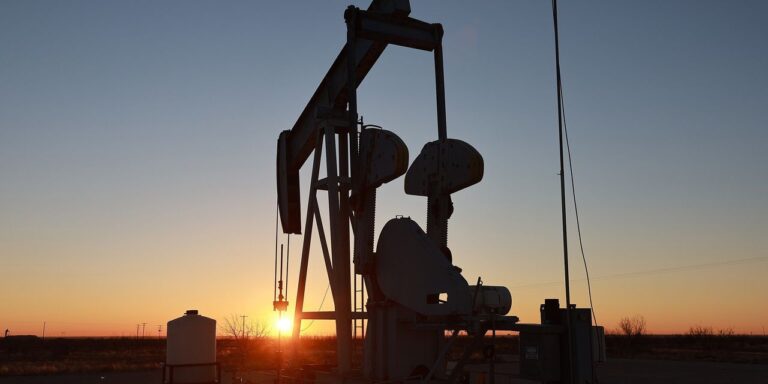Oil futures rose Monday after Saudi Arabia and Russia, as expected, confirmed they would extend production cuts through the end of December, while investors continue to monitor the Israel-Hamas war for potential spillovers that could affect crude supplies.
Price action
-
West Texas Intermediate crude for December delivery
CL00,
+1.53% CL.1,
+1.53% CLZ23,
+1.53%
rose $1.17, or 1.4%, to $81.68 a barrel on the New York Mercantile Exchange. -
January Brent crude
BRN00,
+1.31% BRNF24,
+1.31%
gained $1.21, or 1.4%, to $86.10 a barrel on ICE Futures Europe. -
December gasoline
RBZ23,
+2.16%
tacked on 1.8% to $2.2397 a gallon, while December heating oil
HOZ23,
+1.07%
added 0.9% to $2.9494 a gallon. -
Natural gas for December delivery
NGZ23,
-7.34%
traded at $3.293 per million British thermal units, down 6.3%.
Market drivers
Saudi Arabia on Sunday confirmed it would extend a production cut of 1 million barrels a day, which first took effect in July. In a statement citing an Energy Ministry official, Saudi Arabia said it would extend the cut through next month, affirming a September announcement that had said it would keep the cut in place through the end of 2023.
“Weaker economic expectations have weighed on crude prices recently, which has contributed to prices pulling off their highs and, arguably, once again justified the positions of OPEC+ nations in cutting supply,” Craig Erlam, senior market analyst at OANDA, said in market commentary.
However, he added, “it’s not a question of whether the two countries keep to end-of-year targets, but whether they extend them” beyond that time frame.
The Saudi statement said the kingdom’s production would be approximately 9 million barrels a day in December. Russia on Sunday reportedly said it would also extend a cut of 300,000 barrels a day through the end of December.
“Our oil balance shows that the market will be in surplus in [the first quarter of 2024], which may be enough to convince the Saudis and Russians to continue with cuts through the seasonally weaker demand period of [the first quarter],” Warren Patterson and Ewa Manthey, commodity strategists at ING, said in a note.
WTI declined 5.9% last week, while Brent fell 4.8% — the second straight weekly decline for both grades as fears over a widening of the Israel-Hamas war appeared to fade.
Crude had rallied following the start of the war on fears that a wider conflict could see the U.S. more heavily enforce sanctions on Iranian crude exports, while a worst-case scenario could see Iran or its proxies threaten key transportation chokepoints and infrastructure in the region.
Natural-gas futures, meanwhile, headed sharply lower in Monday dealings after posting a 0.9% gain for last week.
Prices for the commodity have fallen back “as temperatures seem to be warming just a bit,” Phil Flynn, senior market analyst at the Price Futures Group, said in a daily note. “Still, the fundamental outlook for winter could be very interesting especially if winter is colder than normal. Look to buy breaks.”
Read the full article here









